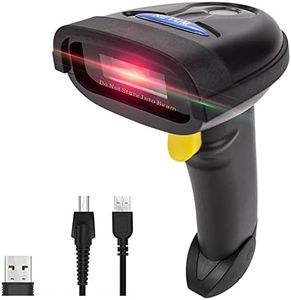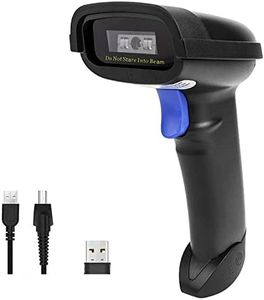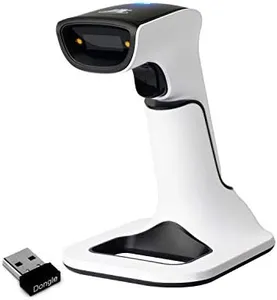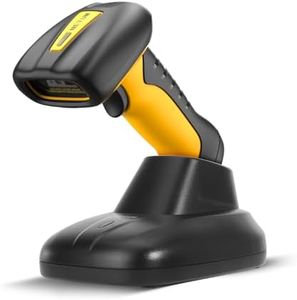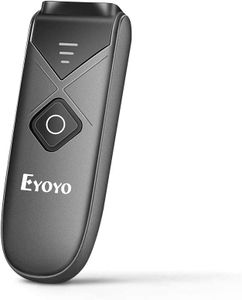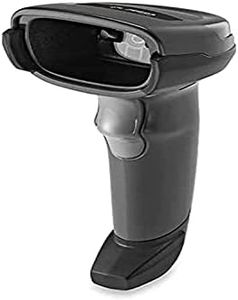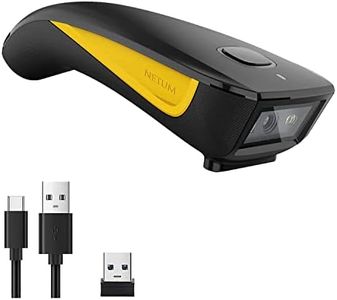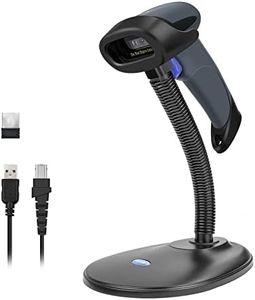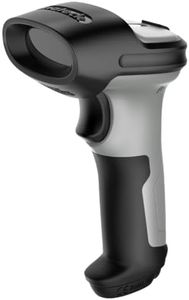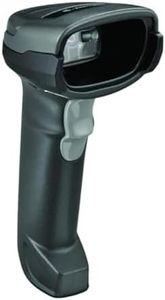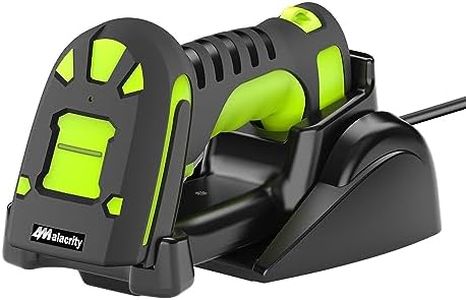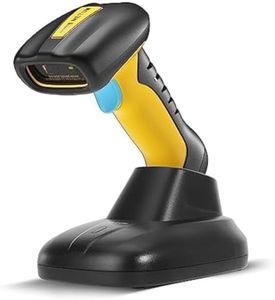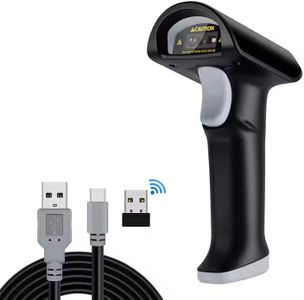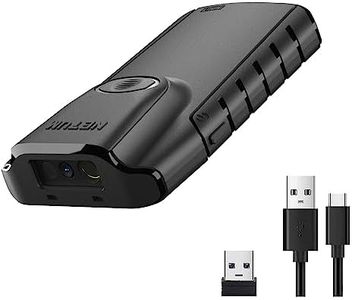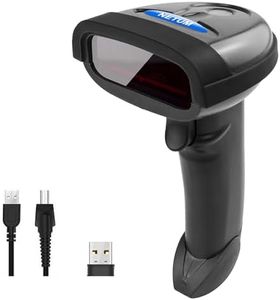We Use CookiesWe use cookies to enhance the security, performance,
functionality and for analytical and promotional activities. By continuing to browse this site you
are agreeing to our privacy policy
10 Best Wireless Barcode Scanners
From leading brands and best sellers available on the web.By clicking on a link to a third party's website, log data is shared with that third party.
Buying Guide for the Best Wireless Barcode Scanners
Choosing a wireless barcode scanner is all about making sure it fits into how you'll use it, whether that's in a warehouse, shop, office, or on the go. Start by thinking about where and how frequently you'll need to scan. Consider the kinds of barcodes you'll encounter and the environment—such as distance from a computer, lighting, and ruggedness. Each of these influences which features are most important for your setup and ensures smoother workflow and fewer headaches down the road.Scanning Technology (Laser vs. Imager)This refers to how the scanner reads barcodes—either with a laser or an imaging sensor. Laser scanners are good for reading standard barcodes quickly, especially in retail settings, but they struggle with damaged or poorly printed codes and can't read 2D codes such as QR codes. Imager scanners capture a photo of the barcode, making them better for reading both 1D and 2D codes, even if they're on a screen or damaged. Think about what types of codes you need to scan most often: if it's just basic barcodes in good condition, a laser may work; if you encounter a broader variety, or codes on screens and packaging, an imager is likely the better choice.
Wireless RangeWireless range is how far the scanner can be from its base or receiver and still work. Short range is usually up to about 10 meters and is good for working right next to your computer or register. Medium range (10–30 meters) covers most small rooms and some stock areas, while long range (30 meters and up) is best used in warehouses or large open spaces. You should match the range to the size of your workspace and how far you'll need to roam between scans; too short a range will cause disconnections, but too much isn't necessary for small areas.
Battery LifeBattery life measures how long the scanner operates between charges. Some scanners last only a few hours, while others run all workday or longer. If you’ll be scanning all day, look for longer battery life or removable batteries for easy swapping. For lighter, occasional use, standard battery life may be fine, but frequent use and long shifts require a scanner that won’t quit before the job’s done.
Durability (Ruggedness)Durability or ruggedness refers to how well the scanner can withstand drops, dust, or splashes. Simple models are designed just for office or retail use, while rugged models can handle drops, dust, and water in industrial or warehouse environments. If you work in a clean, office-like space, basic durability will suffice. But for heavy-duty, outdoor, or warehouse use, you’ll want something sturdy that can survive bumps or the occasional accident.
Connectivity (Bluetooth, Wi-Fi, Proprietary)Connectivity means how the scanner talks to your computer or system: Bluetooth allows direct pairing with tablets and most computers, Wi-Fi gives longer range and network connectivity, while proprietary dongles might be faster to set up but less flexible. Think about what devices you’ll connect to and whether you need to move between computers or if you’ll always use the same station. Choose the type that best fits how your workspace and devices are set up.
Supported Barcode TypesSupported barcode types determine what kinds of codes the scanner can read: 1D (like UPC on products) are standard, but if you also need to scan 2D codes (like QR codes), make sure your scanner handles these. For most retail and office uses, just 1D might be enough, but if you see QR codes, Data Matrix, or other complex codes frequently, go for a unit with 2D support.
Speed and AccuracySpeed is how fast the scanner reads each barcode, and accuracy is how well it does this, even with damaged or low-contrast codes. Faster, more accurate scanners work well in high-volume or fast-paced operations, while slower models are okay for occasional tasks. If you process lots of items quickly, focus on higher speed and accuracy, but if scanning’s more occasional, a standard performer will do.
